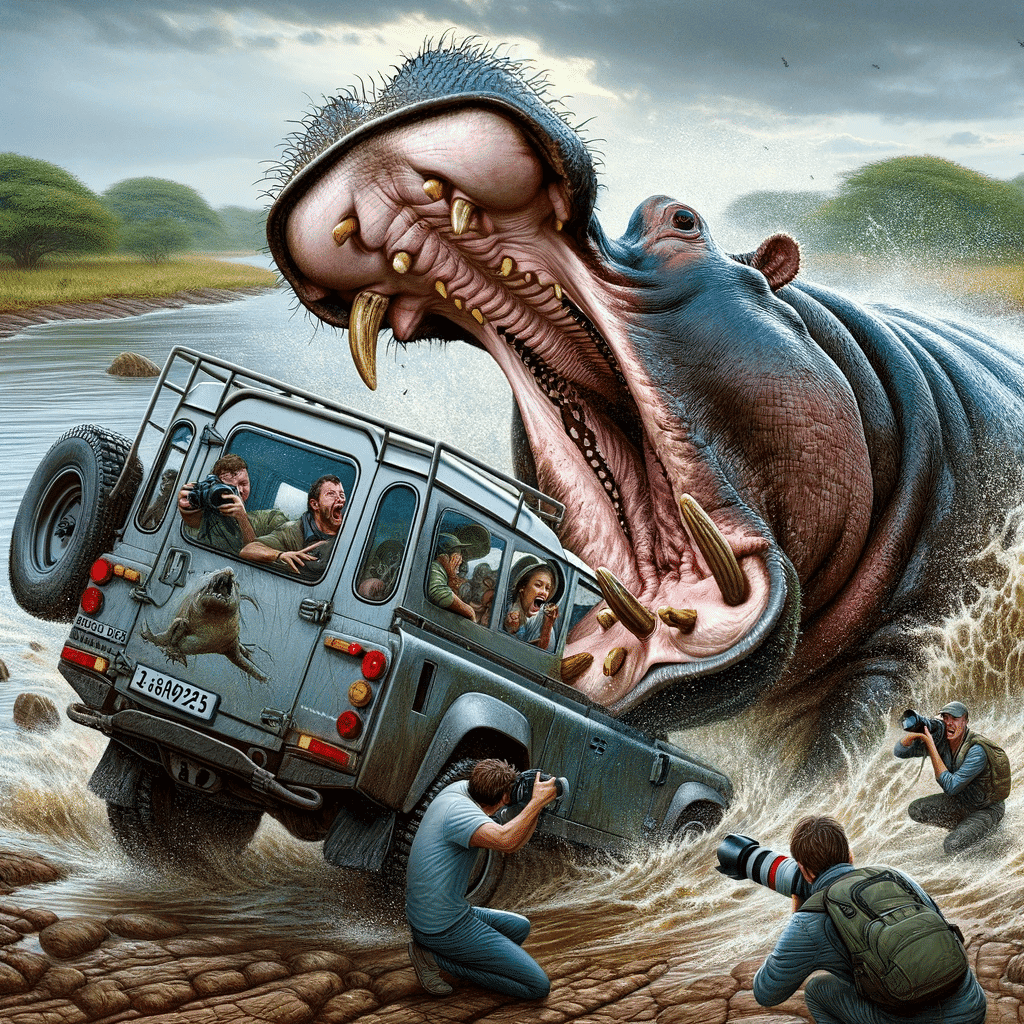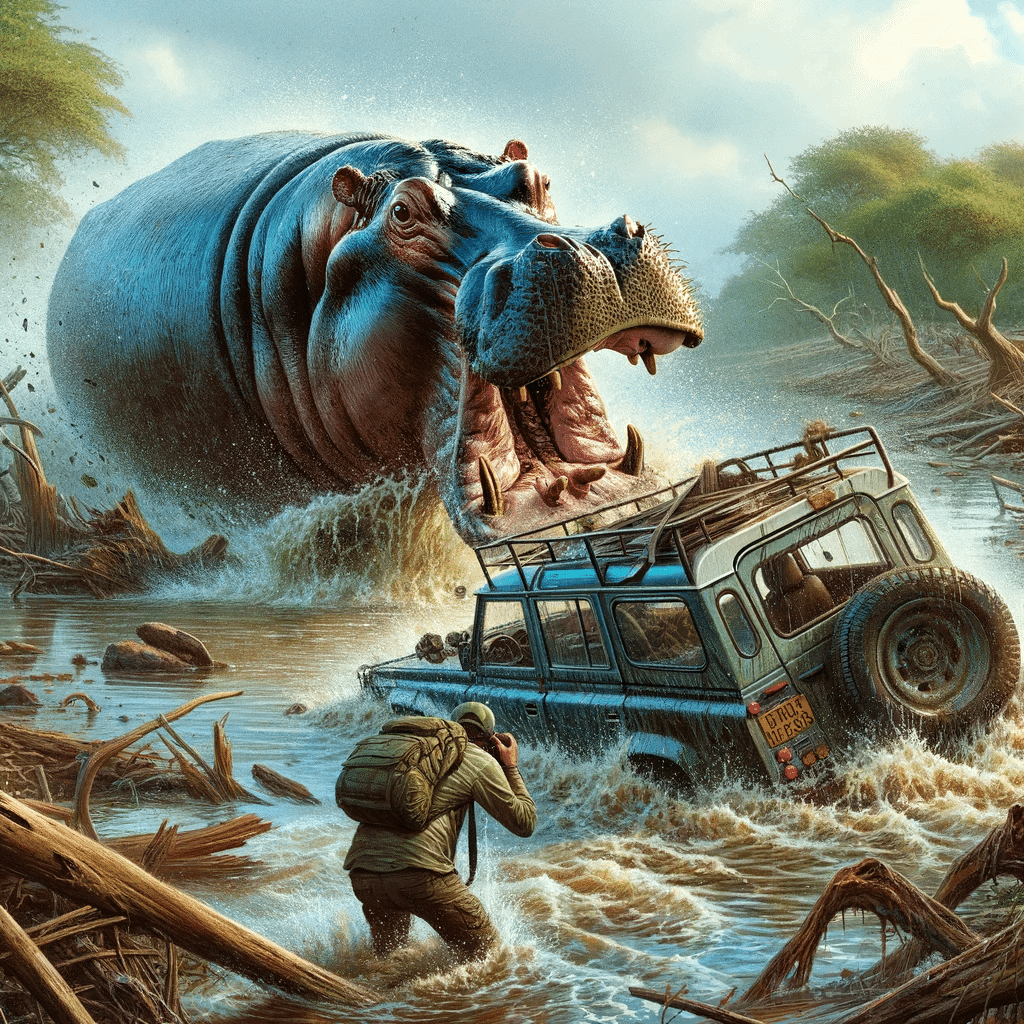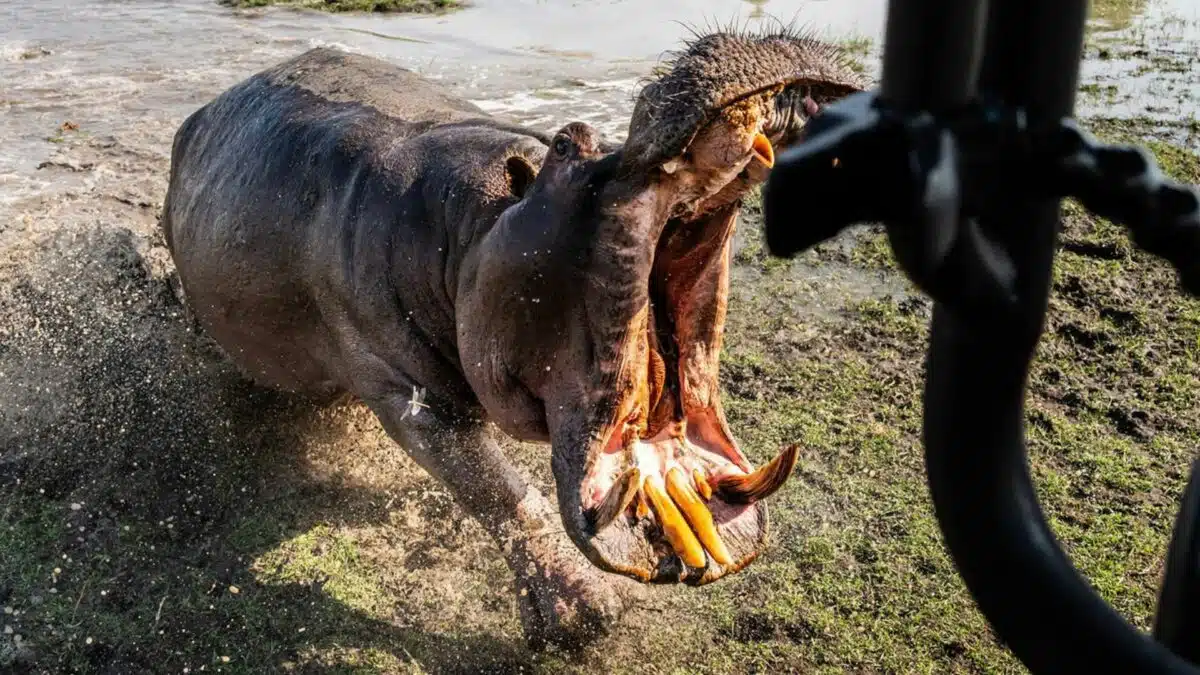The Adventure Begins in Botswana
Embarking on a photographic safari in Africa is akin to stepping into a world where nature writes its own rules. For Bill and Linda Klipp, this adventure started in the Okavango Delta of Botswana, a mosaic of waterways, grasslands, and forests. As experienced wildlife photographers from Key West, Florida, their journey was driven by a passion to capture the untamed beauty of African wildlife in its most natural state.
Hippos in the Wild
In the African wilderness, encounters with wildlife are always unpredictable, especially with creatures like the hippopotamus. Hippos, often seen as gentle giants lazily lounging in water bodies, harbor a different side marked by territorial aggression and immense power. For photographers like the Klipps, understanding and respecting this duality is crucial.
Exploring Botswana’s Natural Wonder
The Okavango Delta, a labyrinth of lagoons, channels, and islands, is a World Heritage site and a photographer’s dream. This rich ecosystem teems with many animals and offers a rare blend of beauty and wildness. Each turn presents a new photographic opportunity, from birds in flight to predators in pursuit.
Wildlife Photography in Action
The Klipps’ game drive in this delta was a journey through one of Earth’s most pristine natural environments. Equipped with their cameras, they were on a quest to document the essence of the delta’s wildlife. Every animal, from the smallest bird to the largest mammal, was a subject in their visual narrative of this natural paradise.

The Encounter with the Lone Hippo
Their encounter with the lone hippo occurred post-lunch, a seemingly serene scene of an animal in its natural habitat. Submerged in a waterhole, the hippo was the epitome of wilderness tranquility. It seemed to be doing nothing more than enjoying its environment, displaying typical hippo behaviors such as snorting and yawning.
Signs of Agitation: Reading Animal Behavior
Bill and Linda, with their seasoned eyes, watched every twitch and turn of the hippo. They knew that animal behavior could be a prelude to something more. For all their calm appearance, Hippos can be unpredictable, and understanding these subtle behavioral cues is a vital skill for any wildlife photographer.
The Charge: A Terrifying Moment
The Unexpected Attack
The tranquility shattered when the hippo suddenly charged. This was no customary display of dominance but a full-fledged attack. The hippo’s rapid advance through the water showed raw power and aggression, contrasting its earlier placid demeanor.
In the Eye of the Storm: Photographers’ Response
Caught in the thick of the action, Bill and Linda’s response blended professional instinct and survival. The guide’s quick reaction to start the vehicle was critical. Yet, the hippo’s immense power was evident as it clamped its jaws on the car, a demonstration of strength that left everyone in awe and fear.
Understanding Hippo Behavior and Power
The hippo’s attack displayed why they are considered one of Africa’s most dangerous animals. The ability to open its mouth to an almost 180-degree angle, showcasing massive canines, is a defense mechanism unparalleled in the animal kingdom. The Klipps witnessed this display of raw power firsthand, a reminder of the respect these creatures command.
The Impact of a Hippo’s Bite
The damage to the vehicle was a testament to the hippo’s strength. The force exerted by its bite was enough to splinter wood and tear through metal, leaving the car with significant battle scars. This encounter starkly illustrated the power struggle that often defines the relationship between humans and wildlife.
Quick Thinking in a Crisis
In wildlife photography, and indeed in any encounter with wild animals, quick thinking can mean the difference between safety and peril. The guide’s presence of mind to continually reverse the vehicle, despite the hippo’s relentless attacks, was crucial in ensuring the safety of everyone involved.
The Role of the Safari Guide
Safari guides are more than just drivers; they are custodians of safety, equipped with an understanding of animal behavior and the environment. In this situation, the guide’s experience and quick decision-making were pivotal in navigating away from danger.

The Art of Wildlife Photography under Pressure
Amid danger, Bill and Linda continued to do what they do best: capture the moment. Bill’s rapid-fire photography, capturing the sequence of the hippo’s attack, and Linda’s video recording were acts of professional commitment in the face of fear. Their work serves as a vivid documentation of wildlife’s raw and unpredictable nature.
Linda’s Video Documentation
Linda’s video footage added a dynamic layer to their story. It captured not just the visual aspect of the attack but also the tension, fear, and adrenaline. This multi-dimensional documentation is invaluable in understanding and respecting the power of nature.
The Vehicle’s Battle Scars
The aftermath of the hippo attack left the vehicle with significant damage. It was a tangible reminder of the encounter, bearing witness to the hippo’s strength and aggression. This damage was physical and a symbol of the wild’s unpredictability.
Emotional and Psychological Effects
For Bill and Linda, the encounter was more than just a close call; it was an emotional and psychological journey. The experience left them with a deeper understanding and respect for the wild and a renewed appreciation for the delicate balance between capturing nature and living within its rules.
The Possible Reasons Behind the Attack
Reflecting on the incident, the Klipps pondered the reasons behind the hippo’s attack. They speculated about the animal’s past encounters, perhaps a history of conflict or territory disputes. This incident underscores the importance of understanding animal behavior and the factors that can trigger such responses.
The Role of a Photographer in Wildlife Conservation
The Klipps’ encounter brings to light the critical role of wildlife photographers in conservation. Their work goes beyond capturing images; it involves understanding and respecting the natural world. Through their lenses, they tell wildlife stories, often highlighting the need for conservation and respect for nature.
The Thrill of the Safari
The allure of the wild, with its inherent risks and rewards, drives photographers like Bill and Linda. The thrill of capturing nature in its raw form, the challenge of adapting to unpredictable situations, and the joy of witnessing nature’s wonders keep them returning for more.
Preparing for the Unexpected
In the wild, preparation is critical. The Klipps’ experience highlights the importance of being ready for anything. Whether it’s a technical failure, environmental challenges, or encounters with wildlife, adapting and responding is essential for any successful safari.
Personal Insights from Bill and Linda
Bill and Linda’s encounter with the hippo was more than just a close call; it was a profound experience that deepened their understanding of nature’s power and unpredictability. Their reflections on this incident testify to their passion for wildlife photography and respect for the natural world.
The Power of Nature’s Unpredictability
The story of their encounter is a reminder of the awe-inspiring power of nature. It highlights the need for respect, caution, and preparation when venturing into the wild. It also serves as a reminder of the beauty and thrill that draw people to nature’s untamed landscapes.
Concluding Thoughts
The Klipps’ encounter with the hippo in Botswana’s Okavango Delta is a vivid reminder of the unpredictability of nature and the power of its inhabitants. Their story is not just one of survival but also of the enduring allure of the wild and the passion and respect that drive wildlife photographers to keep exploring, regardless of the risks.
Next Up:
Join our Forum for free today!


